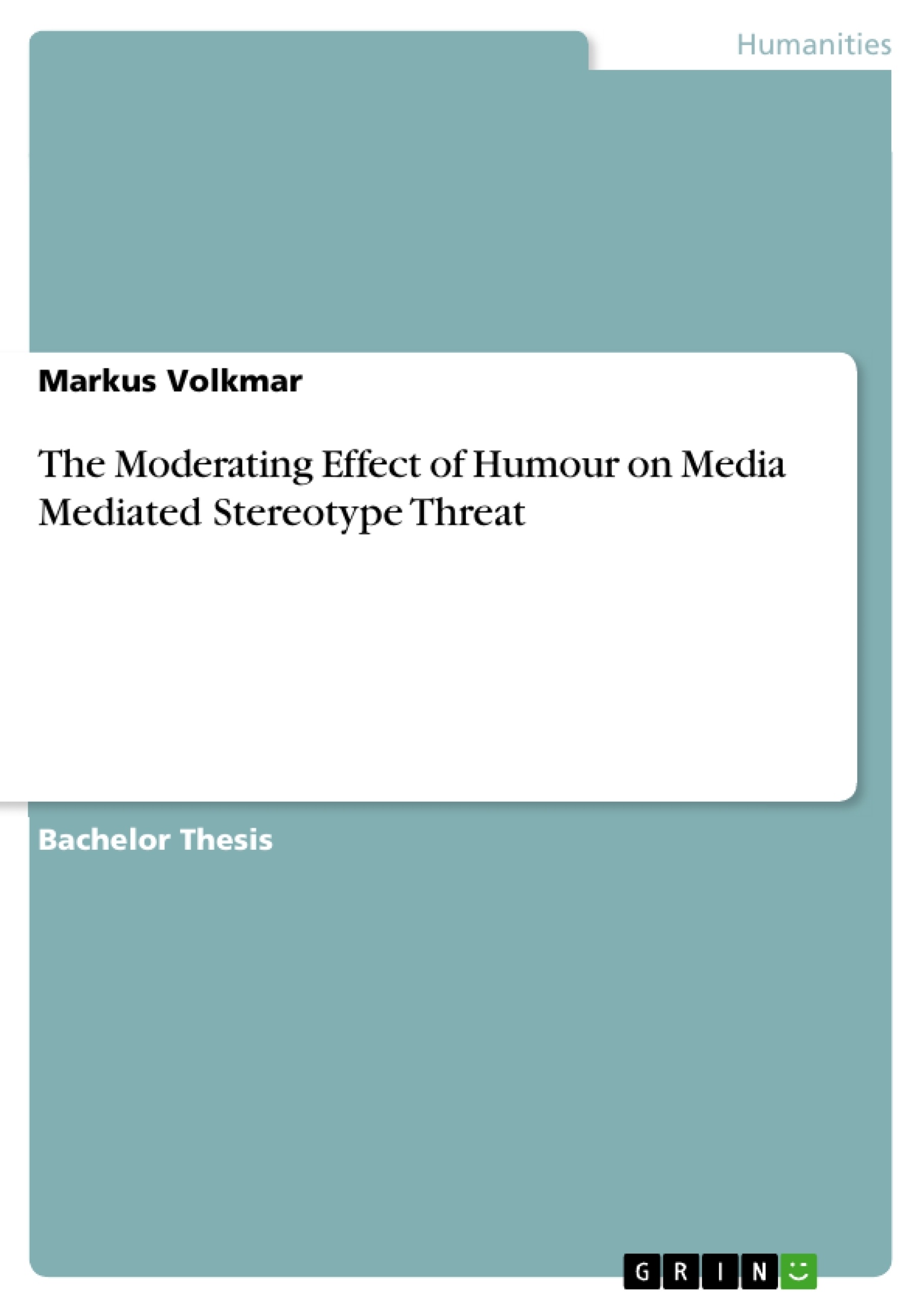The present study aims to gain empirical knowledge about stereotype threat and its underlying mechanisms. An experiment with an all-female sample demonstrated that media mediated stimuli can provoke stereotype threat. Due to that fact the external validity of the construct could be confirmed.
For inducing stereotype threat a video of the German comedian Mario Barth was used, the participants in the control group watched a video of German comedian Luke Mockridge. In the main study a significant effect of stereotype threat on achievement could be found. Additionally, regression analysis suggested that the effect of stereotype threat is moderated significantly by situational humour. The more humour a participant perceived the less was the susceptibility of the participant to the effects of stereotype threat. A moderation of the effects of stereotype threat by coping sense of humour was tested but not confirmed.
Table of Contents
- Introduction
- 1. Theory
- 1.1. Stereotype threat
- 1.1.1. Mechanisms of stereotype threat
- 1.1.2. Media mediated stereotype threat
- 1.2. Sense of humour
- 1.2.1. Coping sense of humour
- 1.2.2. Perceived humour
- 1.2.3. Sexist humour
- 1.3. Coping stereotype threat with humour
- 1.4. Hypotheses
- 1.1. Stereotype threat
- 2. Preliminary study
- 2.1. Method
- 2.1.1. Participants
- 2.1.2. Material
- 2.1.2.1. Measurement of situational humour
- 2.1.2.2. Measurement of perceived sexism
- 2.1.2.3. Measurement of familiarness
- 2.1.2.4. Stimuli
- 2.1.3. Procedure
- 2.2. Results
- 2.1. Method
Objectives and Key Themes
This study aims to investigate the empirical knowledge surrounding stereotype threat and its underlying mechanisms. The research explores the influence of media-mediated stimuli in triggering stereotype threat, validating the construct's external validity. The study investigates the relationship between stereotype threat and achievement, examining the potential moderating role of situational humour and coping sense of humour in mitigating the effects of stereotype threat.
- Stereotype threat and its underlying mechanisms
- Media-mediated stereotype threat and its impact on achievement
- The role of situational humour in moderating the effects of stereotype threat
- The potential moderating effect of coping sense of humour on stereotype threat
- Investigating stereotype threat in an all-female sample
Chapter Summaries
The introduction provides a theoretical framework for the study, outlining the concepts of stereotype threat, sense of humour (including coping sense of humour and perceived humour), and the potential link between humour and coping with stereotype threat. The study's hypotheses are also presented in this section.
Chapter 2 focuses on the preliminary study, detailing the methodology used to test the stimuli's validity. This chapter describes the participants, materials (including measurement tools for situational humour, perceived sexism, and familiarness), stimuli, and procedures involved in the preliminary study. The results of the preliminary study are also discussed in this chapter.
Keywords
The key focus areas of this study are stereotype threat, situational humour, coping sense of humour, and their impact on achievement. The research investigates the potential for media-mediated stimuli to trigger stereotype threat and explores the moderating role of humour in mitigating its effects. The study specifically focuses on an all-female sample, investigating the dynamics of stereotype threat within this demographic.
- Arbeit zitieren
- Markus Volkmar (Autor:in), 2015, The Moderating Effect of Humour on Media Mediated Stereotype Threat, München, GRIN Verlag, https://www.grin.com/document/313181



